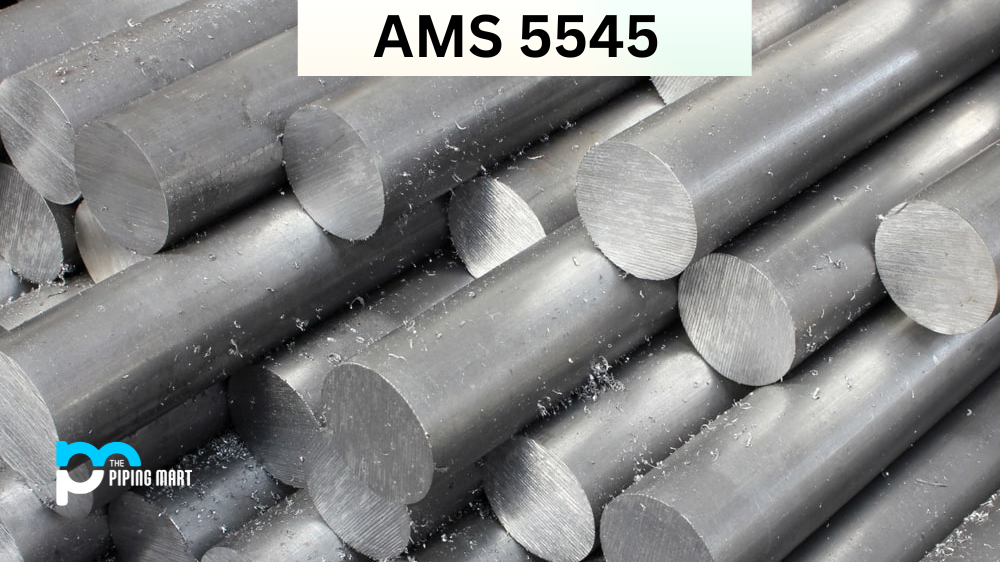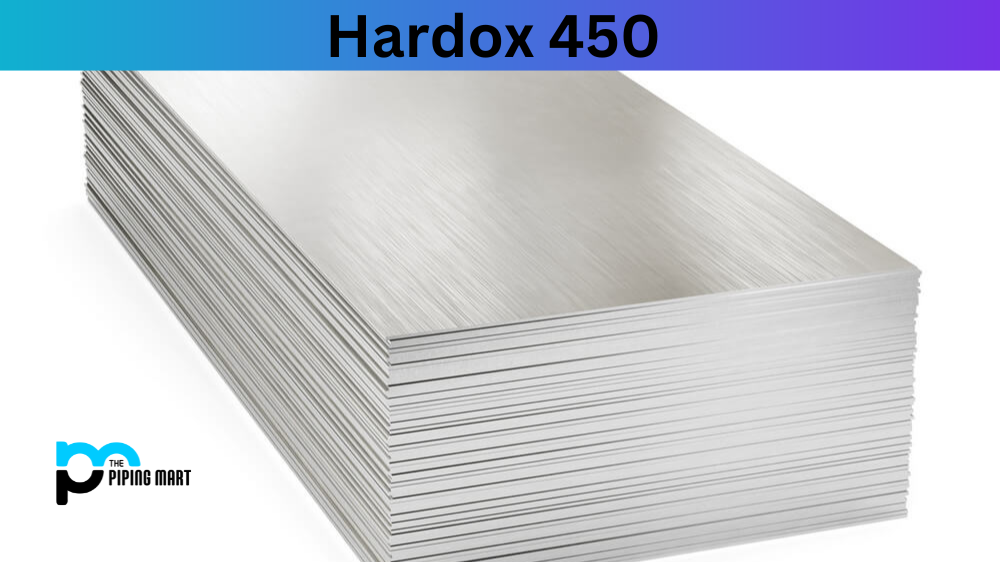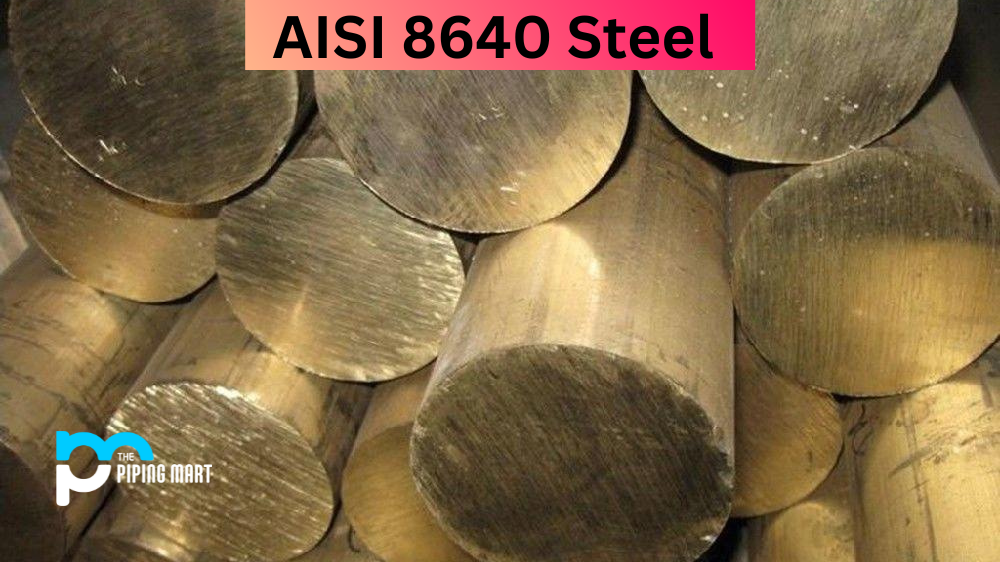AMS 5545 is a popular aircraft steel grade, often used to produce high-stress, high-temperature components such as engine turbine discs, compressor blades, and aircraft exhaust systems. This steel grade is known for its superior physical and mechanical properties, making it ideal for use in extreme environments. This blog post will explore the composition, physical and mechanical properties, hardness, heat treatment, and uses of AMS 5545.
What is AMS 5545?
AMS 5545 (also known as Nickel Rene 41) is a specification developed by SAE International that outlines the chemistry, mechanical properties, and heat treatment requirements for nickel alloy and stainless steel sheets, strips, and plates. The material is extensively used to manufacture parts, such as exhaust systems, aerospace components, and high-temperature applications. Complying with AMS 5545 ensures quality and reliability and guarantees the material’s compatibility with existing industry standards. As an expert in material science, I determined that adhering to these requirements is vital in producing products that meet the rigorous demands of the modern engineering industry.
AMS 5545 Composition
AMS 5545 is a low-alloy steel containing elements such as nickel, chromium, and molybdenum, contributing to its strength and corrosion resistance. The chemical composition is as follows: carbon (0.15 – 0.20%), manganese (0.60 – 0.90%), phosphorous (0.025% max), sulfur (0.025% max), silicon (0.15 – 0.35%), chromium (0.80 – 1.15%), molybdenum (0.25 – 0.35%), nickel (1.25 – 1.75%), and vanadium (0.03% max).
| Element | Min | Max |
| Carbon | 0.06 | 0.12 |
| Manganese | — | 0.10 |
| Silicon | — | 0.20 |
| Chromium | 18.0 | 20.0 |
| Nickel | Balance | |
| Boron | 0.003 | 0.010 |
| Iron | — | 5.00 |
| Cobalt | 10.0 | 12.0 |
| Titanium | 3.00 | 3.30 |
| Aluminum | 1.40 | 1.60 |
| Molybdenum | 9.00 | 10.50 |
AMS 5545 Physical Properties
The physical properties of AMS 5545 include a density of 7.8 g/cm3, a specific heat capacity of 0.49 J/g°C, and a coefficient of thermal expansion of 11.5 µm/m°C. Its melting point is around 1390°C, with a thermal conductivity of 26.3 W/mK. These physical properties make it an ideal material for parts exposed to high temperatures.
| Density | Melting Point | Coefficient of Expansion | Modulus of Rigidity | Modulus of Elasticity |
|---|---|---|---|---|
| 8.25 g/cm³ | 1345 °C | 13.6 μm/m °C (20 – 100 °C) | 83.2 kN/mm² | 218.0 kN/mm² |
| 0.298 lb/in³ | 2450 °F | 7.41 x 10-6 in/in °F (70 – 212 °F) | 12067 ksi | 31619 ksi |
AMS 5545 Mechanical Properties
AMS 5545 has excellent strength and toughness properties. Its ultimate tensile strength is around 1590 MPa, and its yield strength is about 1310 MPa. It also has good elongation and reduced area, which means it can withstand high-stress levels before breaking. Its fatigue resistance is also noteworthy, making it an excellent choice for components that experience high cyclic loading conditions.
AMS 5545 Specifications
- AMS 5545
- AMS 5713
- AMS 5800
- AMS 5712
- GE C50T71
AMS 5545 Uses
AMS 5545 is commonly used to manufacture high-temperature, high-stress components in the aviation and aerospace industry. It produces engine parts such as turbine discs, compressor blades, nozzles, and afterburner parts. The material’s excellent strength, toughness, and wear resistance make it ideal for these critical components. AMS 5545 also produces exhaust systems for gas turbines and other high-temperature industrial processes.
AMS 5545 Hardness
AMS 5545 is a relatively hard steel, with a Brinell hardness of around 350. This means that it can resist the deformation caused by indentation or scratching. The high hardness also contributes to its excellent wear resistance, making it an ideal material for parts that are subjected to abrasive wear.
AMS 5545 Heat treatment
AMS 5545 is a fully pearlitic steel and can be heat-treated to improve its properties. The standard heat treatment for AMS 5545 is quenching and tempering. During the heat treatment process, the steel is heated to a temperature of around 980°C, held at that temperature for a specific time, and then quenched in water or oil. The quenching process rapidly cools the metal, transforming the austenite into martensite. The part is then tempered at a lower temperature to reduce the hardness and increase toughness.
Conclusion:
In conclusion, AMS 5545 is a versatile, high-performance grade aircraft steel with excellent physical and mechanical properties, hardness, and heat treatment characteristics. Its outstanding fatigue and wear resistance make it an ideal choice for high-stress, high-temperature components in the aviation and aerospace industry. If you’re in the market for a steel alloy that can withstand extreme conditions and rigorous use, AMS 5545 is an excellent option.

Abhishek is a seasoned blogger and industry expert, sharing his insights and knowledge on various topics. With his research, Abhishek offers valuable insights and tips for professionals and enthusiasts. Follow him for expert advice on the latest trends and developments in the metal industry.




